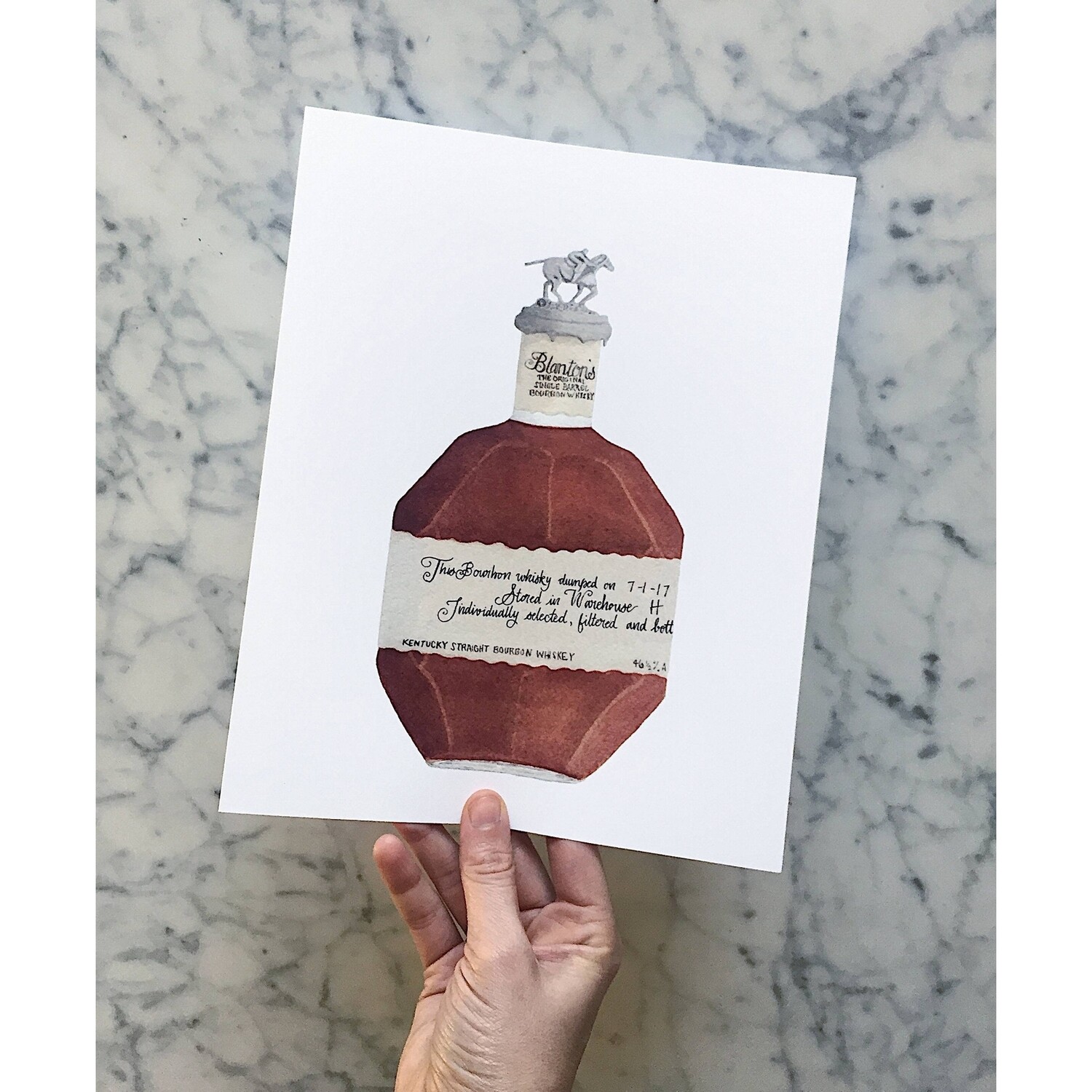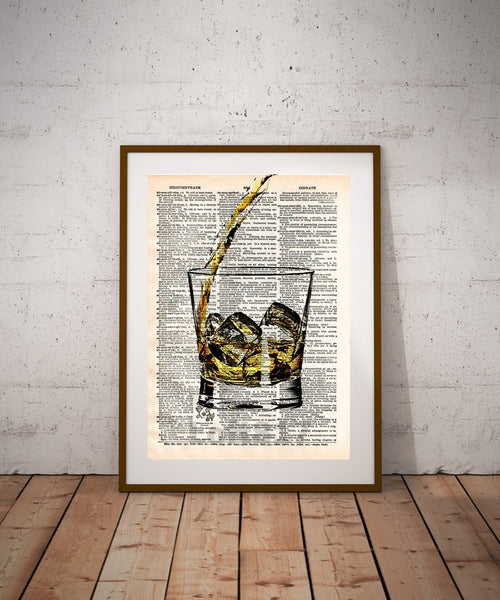Recording the Essence of Whiskey Art Through One-of-a-kind Aesthetic Depictions and Designs
The art of whiskey expands past the fluid itself, showing up via a range of visual depictions that envelop its storied heritage and craftsmanship. What continues to be to be discovered is just how these developing designs show not just the whiskey itself yet also the changing landscape of imaginative interpretation. Bourbon Art.
The Background of Whiskey Art

As bourbon production spread, so as well did the need to boost its experience through art. From the elaborate inscriptions on very early casks to the sophisticated tags of modern containers, each element reflects a special creative vision, acting as a visual narrative of the whiskey's heritage.
In the 18th and 19th centuries, the surge of the commercial revolution even more improved scotch art, resulting in innovative packaging and advertising that captured consumer attention. Designers and musicians started explore visual appeals, imbuing whiskey-related imagery with symbolic meanings that conveyed ideas of workmanship, neighborhood, and tradition.
Today, whiskey art remains to develop, blending traditional techniques with contemporary art types. Limited Edition. This recurring discussion between the spirit and its aesthetic representation highlights the enduring bond between bourbon and culture, improving the general experience for enthusiasts worldwide
Iconic Bottle Styles
While many aspects add to the appeal of bourbon, famous container designs play a critical function fit consumer perception and boosting the total experience. The aesthetic discussion of whiskey containers is not merely a visual factor to consider; it acts as a bridge between the consumer and the product, stimulating feelings and establishing assumptions.
Unique forms, materials, and closures can raise a whiskey brand's identification, making it quickly recognizable on jampacked racks. As an example, the timeless Glenfiddich container, with its classy tapered silhouette, conveys a sense of practice and workmanship, while the vibrant, contemporary style of the Balvenie container reflects development and class. The use of tinted glass or unique structures can recommend the top quality and personality of the whiskey within.
Renowned styles typically include aspects of cultural heritage, symbolizing the brand name's background and connection to its origins. Brand Names like Jack Daniel's make use of an uncomplicated, robust design that reverberates with its American bourbon heritage. Ultimately, the effect of container design expands beyond mere capability; it encapsulates the significance of the brand name, inviting customers to discover and indulge in the abundant tapestry of bourbon culture.
Label Artwork and Branding
Bottle styles often establish the phase wherefore consumers can anticipate, yet tag art work and branding play an equally substantial role in interacting a whiskey's identity. The label functions as the very first factor of contact between the item and the consumer, encapsulating the significance of the scotch within its visual elements.
Reliable tag art work combines typography, color, and images to produce a narrative that reverberates with the brand's heritage and target audience. As an example, a tag including detailed images and vintage font styles might stimulate a feeling of tradition and workmanship, attracting connoisseurs. In contrast, strong shades and contemporary style components might bring in a more youthful market seeking development and enjoyment.


Photography and Visual Storytelling
Catching the significance of whiskey via photography and visual narration is an art kind that boosts the brand experience. This tool goes beyond plain item depiction, diving into the elaborate stories that surround each bottle. By using compelling imagery, professional photographers can evoke feelings that resonate with customers, ultimately building a much deeper link to the bourbon brand.
Visual narration in whiskey photography often makes use of abundant appearances, lights, and make-up to highlight the one-of-a-kind characteristics of the spirit. The interplay of light and shadow can emphasize the brownish-yellow tones of bourbon, while the selection of background elements-- such as rustic barrels or stylish glassware-- can strengthen the brand name's heritage or lifestyle organizations.
Moreover, catching the ritualistic elements of bourbon usage, from the putting to the sampling, invites visitors into a sensory experience, allowing them to imagine the tastes and aromas that wait for. Each photograph not only showcases the item yet additionally informs a story of craftsmanship, custom, and the minutes that scotch can enhance - Bourbon look these up Art. Therefore, photography ends up being a powerful device in articulating the identification of whiskey brands, positioning them within the wider social landscape
Arising Trends in Whiskey Art
The advancement of scotch art is progressively shaped by contemporary patterns that reflect wider social changes and consumer preferences. One prominent pattern is the combination of sustainability right into art methods. Artists are now using recycled materials and green procedures to create whiskey-themed items, reverberating with environmentally conscious consumers. This change not only highlights the relevance of sustainability yet likewise boosts the narrative surrounding scotch manufacturing.
Furthermore, electronic art has actually risen in popularity, enabling cutting-edge representations of whiskey. Musicians are leveraging technology to craft immersive experiences, such as augmented truth installations that involve audiences and provide a much deeper understanding of scotch's cultural value. This fad also expands to social networks platforms, where visually striking material garners attention and fosters area amongst fanatics.
In addition, collaborations in between bourbon brand names and musicians are coming to be more typical. These partnerships generate limited-edition product packaging layouts and exclusive artworks that celebrate both the workmanship of scotch and the creativity of artists. As scotch art remains to progress, these arising fads will unquestionably form its future, fostering a dynamic intersection of culture, sustainability, and technology within the whiskey area.
Verdict
To conclude, the art of whiskey includes a varied variety of visual depictions that reflect its abundant heritage and workmanship. From renowned container designs and intricate tag artwork to engaging photography, each element contributes to a wider story that boosts the customer's experience. As emerging fads, such as digital art and sustainability, proceed to shape this imaginative landscape, the complex identity of whiskey continues to be a withstanding resource of cultural connection and expedition.

In verdict, the art of scotch incorporates a diverse variety of visual representations that reflect its rich heritage and craftsmanship.